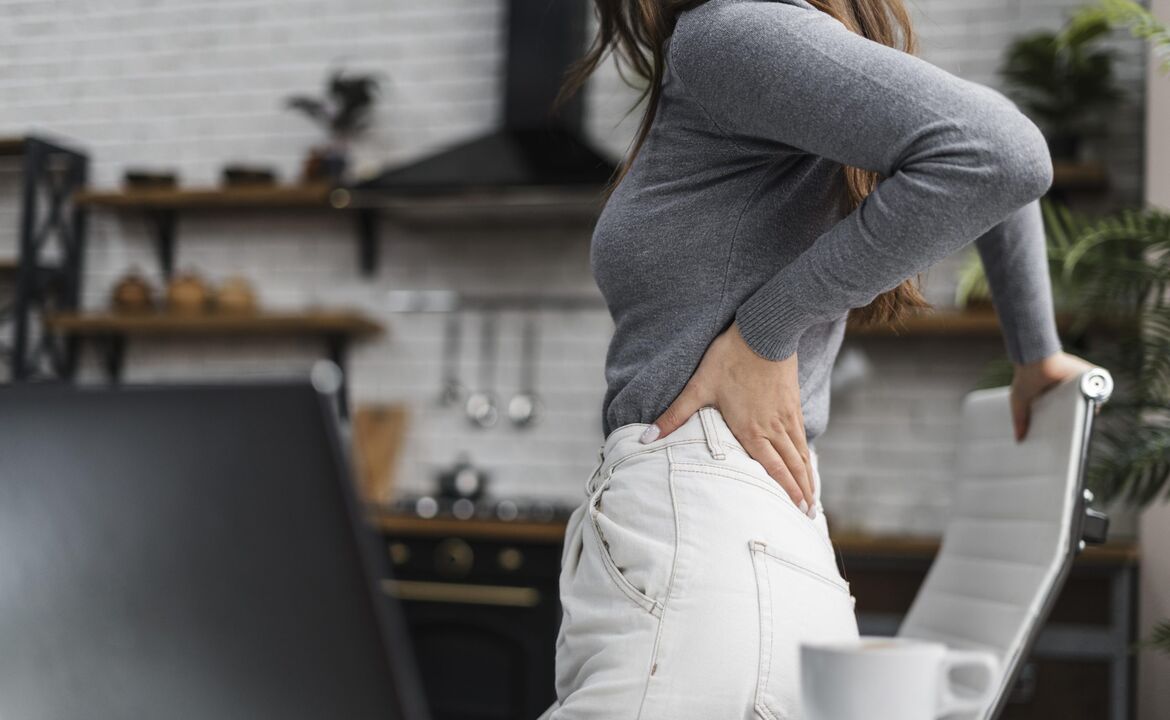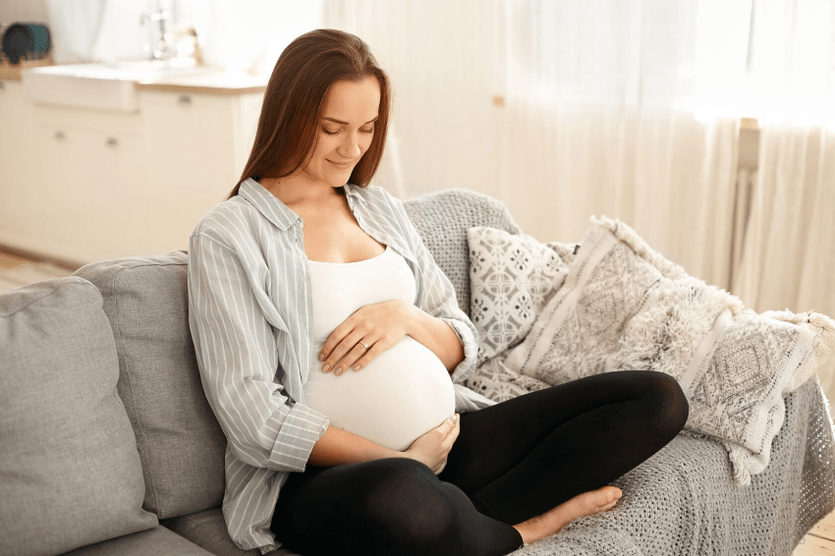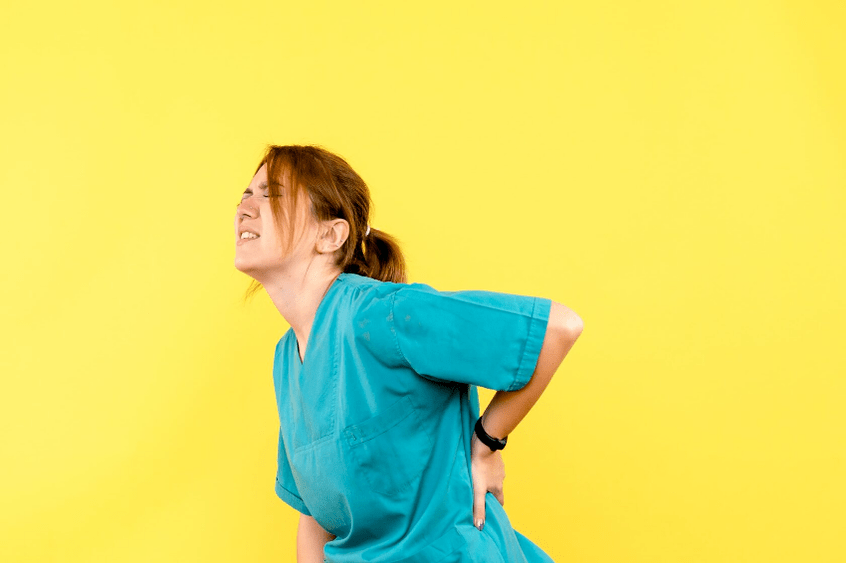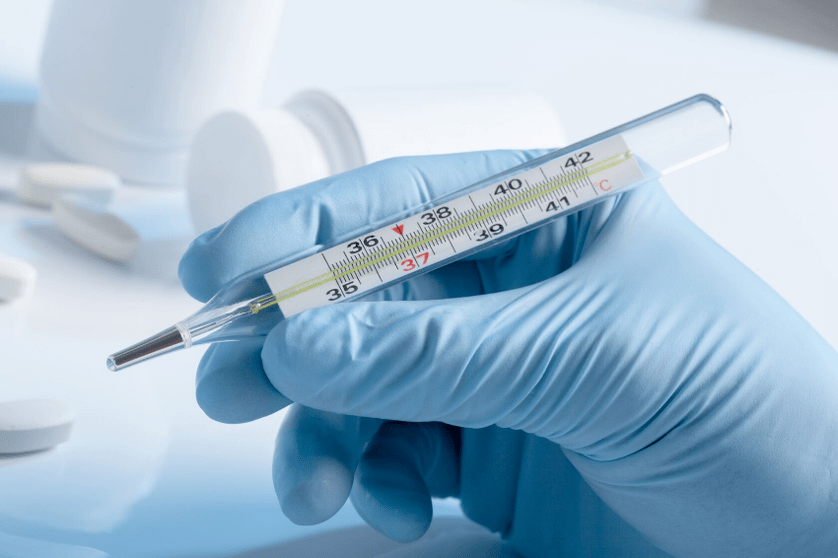
Lumbar back pain can indicate various diseases of the spine, disturbances in the connections of nervous structures, injuries to internal organs, soft tissues, and oncological tumors. The pain syndrome can be of different intensity and nature of manifestation. Depending on the type of pain that occurs, the pathology can be identified, but in order to make an accurate diagnosis, an examination is carried out, including instrumental diagnostics. This will allow you to find out why the pain is occurring. Based on the results of the examination, the doctor selects the treatment.
Types of pain
Back pain in the lumbar region may indicate the development of serious pathologies. But in most cases, the discomfort is benign and is caused by various external factors:
- hypothermia;
- staying in an uncomfortable position for a long time;
- compression of blood vessels;
- soft tissue injuries due to trauma.
When diagnosing back pain, the doctor pays attention to the nature and duration of its manifestation. If the pain occurs due to a cold or simple hypothermia, it disappears completely after 2 weeks of applying ointments containing non-steroidal anti-inflammatory components. They do not help to cure the disease, but it is not harmful to move after them.
If the spinal pain does not go away despite the use of local drugs and sometimes gets worse, a full examination is necessary. In some cases, such a symptom is a warning sign that indicates the development of dangerous diseases. In the case of diseases of the spine, during the attack, the pain may radiate to different areas of the body: legs, arms, groin. Such an attack is often accompanied by unpleasant sensations in the body: numbness, tingling, goosebumps, burning sensation.
In most cases, pain in the lumbar region is sudden, acute and similar to lumbago (lumbago). Patients themselves describe the pain as shooting, sharp, sometimes pressing and less intense. At the moment of the attack, a person's movement is limited, and the straightening of the lower back is possible only through pain. The movements do not bring relief and sometimes cause increased pain. An acute condition may last only a few minutes, but sometimes it can last for a day or more.
Women and men over the age of 50, as well as those with serious injuries, experience chronic pain in the lower back. In this case, it is constant, but tolerable; patients notice only mild discomfort, stiffness in the morning and pain at night. An attack of chronic pain can be triggered by stress, heavy lifting or hypothermia. The rest of the time there is no pain, there is stiffness and discomfort.
Lower back pain in pregnant women
Women often suffer from back pain during pregnancy. Its occurrence involves natural changes. As the fetus grows, the center of gravity changes during the second trimester of pregnancy, causing postural deformation and bending of the lumbar region. This change is not dangerous, it appears suddenly in more than 70% of women, but you need to pay attention to it, because it can lead to serious health problems in the future.
No special treatment is performed during pregnancy. In order to reduce the intensity of painful attacks, the doctor may recommend the woman to use NSAIDs locally. In some cases, it is recommended to wear support structures to ensure proper distribution of the load on the spine.

Expectant mothers cannot neglect the general rules either, they must rest regularly and avoid wearing high-heeled shoes. Be careful when bending down to lift something. Straighten your back and straighten it, then you need to stand up as slowly as possible. Attention should also be paid to the selection of the bed at home, it must be comfortable.
Pain at night and in the morning
If severe discomfort mainly bothers a person at night and appears in the morning immediately after waking up, then the problem should be found in the quality of sleep at night. The manifestation of sharp painful sensations during the rest period is associated with an incorrect body position at night. The first thing you should do at home is to change the mattress, bed and pillow. It would be nice if the bed was orthopedic.
If the pain is only observed in the morning, it is worth considering the possibility of sudden movements after waking up. It is better to wake up earlier and do a light warm-up for your muscles and joints while lying in bed. If you regularly do such exercises, you can forget about the manifestation of pain. It will be much easier to bend down, and the feeling that your back is stiff will go away. After warming up, it will be easier to get up.
It is also worth considering that the spine and lower back suffer from excess weight. The problem of back pain is more common in obese individuals as well as in patients who lead a sedentary lifestyle. After normalizing behavior and improving the quality of night rest, periodic pain will disappear if it is not associated with any disease.
Lower back pain radiates to the leg
Pain in the back can spread throughout the body. Most often it radiates to the leg, it can affect part of the foot and reach the heel. The cause of the pain is sciatica, lumbago or radiculitis, i. e. pathologies related to nerve tissue damage. Due to changes in the structure of cartilaginous tissue, which lead to the deformation of the vertebrae and the formation of osteophytes, pinching of nerve endings occurs, against the background of which sharp pain attacks appear, radiating to the leg.
Acute pain
The duration of acute pain attacks varies. They can last from a few minutes to several weeks. Chronic pain can manifest itself imperceptibly and sharply for a person, the patient gets used to it and may not feel it when the attack passes.
Acute, unbearable pain in the lumbar region is characteristic of various diseases:
- scoliosis;
- myositis;
- arthritis;
- arthrosis;
- neurological changes;
- tumor processes;
- osteomyelitis;
- spondylitis
If the pain is shooting, it means that the roots of the spinal cord are involved in the pathological inflammatory process. If the pain seems monotonous, dull and spreads to the abdominal cavity, hepatitis should be suspected. Severe attacks that disturb consciousness and cause its loss may indicate urolithiasis or pyelonephritis.
Causes of lower back pain
Back pain in the lumbar region can have different causes. Many of them lead to the development of pathologies that significantly reduce the quality of life, in which pain becomes a constant companion. Coping with the problem on your own is practically pointless and difficult, the exact diagnosis and selection of appropriate treatment is only possible based on the results of instrumental diagnostics.
The most common causes of back pain are:
- intervertebral hernia protrusions;
- osteochondrosis;
- disturbances in the functioning of the gastrointestinal tract;
- curvature of the spine;
- tumors;
- damage to muscles and ligaments;
- soft tissue infections.

The cause of the pain is often simple hypothermia, which affects the largest nerve in the human body, the sciatic nerve. In addition, against the background of hypothermia, it can pinch, which causes acute pain. Other factors can also trigger the attack:
- physical inactivity;
- excessive nervous tension;
- hard physical work;
- damages and injuries.
Lower back pain may occur with urolithiasis; accompanied by a seizure. They are also characteristic of many sexually transmitted diseases. Pain in the lumbar region of women is not always pathological. Physiological norm if it occurs before menstrual bleeding or at the beginning of menopause. In these cases, the conditions are not dangerous and can be controlled with the use of pain relievers. With each of the listed pathologies, it is problematic to move, bend or do any work at home.
Spinal diseases
The main cause of lower back pain is various diseases, deformations and changes of the spinal column. Pain can be of a completely different nature. The intensity of their manifestation depends on many factors and varies greatly depending on the affected part of the spine. The most common types of pain are:
- periodic;
- local or local;
- pulling or squeezing;
- burning and cutting;
- shot.
The intensity of the symptoms may depend on stress, sitting in an uncomfortable chair, sports and physical activity. Discomfort increases when standing or sitting uncomfortably. When the muscle fibers are spasmed, lumbago is observed and the whole area hurts. In case of such pain, movement stiffness occurs, the symptom spreads to the back of the thigh and can reach the calf and even the foot. Much depends on the type and nature of the disease. Pathology should be treated by a specialist.
Intervertebral hernia
Intervertebral hernias of the lumbar region often develop with osteochondrosis in the later stages of development. They usually cover the lumbar region, the lower back, and form between the 4-5 vertebrae and in the sacrum area. In this case, the pain syndrome is unpleasant, intrusive, associated with damage to the nerve roots and poor blood circulation. The pain is similar to radiculitis and gets worse when standing or sitting in an uncomfortable chair. If the herniation is large and compresses the spinal cord, the person experiences a loss of sensitivity, and in complicated cases, paralysis is possible due to the herniation between the discs.
With the appearance of the following episodes, you can understand what bothers you about intervertebral hernia:
- it is impossible to stand without support on a chair or other surface, this is due to the increased load on the intervertebral discs;
- lying on the stomach is extremely uncomfortable;
- feeling of stiffness in the back;
- it is difficult to bend forward;
- arching the back is impossible due to pain that prevents movement.
Hernias are treated conservatively and operatively. The appropriate method is determined depending on the patient's condition. Conservative treatment of the disease is ineffective in advanced cases.
Rachiocampsis
With smaller curves, the pain does not appear. A feeling of fatigue may occur, and the person wants to spend more time lying down, because the pain becomes stronger when standing or sitting. Various neurological disorders occur with secondary deformities. At this stage, pain occurs, which can be moderate to moderately intense, on the left and right side. As the disease progresses, the discomfort increases during the day, becomes unbearable in advanced forms, and is not alleviated by local or systemic pain relievers. It is difficult to completely get rid of the manifestation, the curvature can be quickly cured.

Osteoporosis
This disease often occurs in men and women over the age of 50. The pathology is characterized by rapid loss of bone tissue. Such loss results in fragility, the vertebrae become less strong, and damage is possible even with minor injuries, physical exertion, or heavy lifting. Patients bend only because of discomfort and return from the bent position with severe pain. To lift something from the floor, it is better to sit down and straighten your back, then stand up. Sitting down for the first time reduces the health risk of osteoporosis.
The pain of osteoporosis is not only caused by fractures. The disease is dangerous, a disability group can be registered with it.
Spinal injuries
The most common injury is a bruise. If it is mild, then there is moderate discomfort. During the day, it intensifies as a result of movement, causing local swellings, hematomas and bleeding. The symptom always increases with movement and exercise. In severe cases, the problem not only hurts, but can also cause neurological disorders, especially if nerve endings are also involved in the process. It is impossible to completely get rid of the problem, the consequences of injuries cannot always be remedied even by surgery.
Soft tissue and kidney damage
In the case of soft tissue bruises, mild pain occurs, which decreases after local application of anti-inflammatory compounds. The pain is always local, the bruised area is swollen, bleeding is possible.
If, in combination with the described symptoms, the pain in the left lumbar area is accompanied by the appearance of blood in the urine, this means that the kidneys are damaged. The discomfort becomes more intense, in case of severe damage to the organs of the excretory system, urination becomes impaired or impossible. Hematomas can occur in the lower back. The development of shock and life-threatening conditions is not excluded.
Spinal infections
Infectious lesions of the spine are more dangerous. Osteomyelitis can be:
- postoperative;
- post-traumatic;
- contact;
- hematogenous.
In acute cases, the disease progresses at lightning speed. It is characterized by the manifestation of pain that intensifies during the day, accompanied by high body temperature and very strong general deterioration. The nature of the discomfort can be different: twitching, pressure, cracking. The attacks are severe, hindering movement and forcing the person to freeze in one position because it hurts to move. In chronic pathologies, fistulas may appear with the formation of purulent discharge.
An uncommon but dangerous disease of the spine is tuberculosis of the spine. Already in the initial stages of development, it causes deep and very strong pains below, which reach their peak after exertion. The gait of men and women stiffens. With the destruction of the bone structures, the nerve roots are compressed, the pain becomes burning and spreads to the lower part of the body.
With a spinal epidural abscess, the pain is quite deep, very strong, accompanied by chills and muscle tension. Against the background of progress, the radicular syndrome intensifies, paresis occurs, and the functioning of the pelvic organs is disturbed.
Muscle damage
Painful discomfort in the lower lumbar area can occur after physical activity, weight lifting or intense training. This is also manifested when you stay in a static position for a long time with tension in the waist and glutes.
In the case of such a change, the discomfort appears less intensely at rest and after rest, after applying a warming ointment. Muscle damage or myositis does not only occur against the background of infections. It can be triggered by stress and hypothermia of the body, severe poisoning and metabolic disorders. The condition is most often accompanied by excruciating pain.
Myofascial syndrome
Myofascial syndrome is classified as a painful condition in which lower back discomfort is associated with painful muscle tension. During the attack, trigger points appear in the affected area. The sources of pain are muscles and fascia, connective tissues. To treat this pathology, specialists prescribe pain relievers, non-steroidal anti-inflammatory drugs and sedatives.
In some cases, the treatment of the disease with centrally acting muscle relaxants is recommended. Such remedies are designed to reduce tonic tension, reduce excitation, and induce relaxation of the muscles involved in the spasm so that the person can bend. In some cases, specialists resort to point blocking of points by administering anesthetics.
Tumors of the spine and kidneys
Tumors of the spine and spinal cord are quite rare. The frequency of detection of such diseases does not exceed 0. 5% of the total number of diagnosed cancers. Neoplasms can be benign or malignant. Depending on this, the prognosis varies significantly.
With this pathology, the distinguishing symptom is pain in the lumbar region. With a benign etiology, the discomfort is alleviated by the use of drugs. If the formation is malignant, the treatment must be complex, often reduced to surgery.
Also, lower left back pain can be attributed to kidney cancer. It will have a distinct character, it can be painful, pressing, cracking. The discomfort increases over time, and urinary disorders develop. Do not steam or heat the affected area. Normalization of the condition is possible after the removal of the formation.
What to do after acute back pain
If you experience a momentary sharp pain in your back, you can manage the situation on your own. If possible, see a specialist and undergo an examination to reduce the risk of repeated attacks.
A specialist should be consulted urgently if the following symptoms occur:
- lower back pain of any kind persists for a week;
- body temperature rises against the background of pain;
- discomfort occurred at the site of previous injuries and damage;
- the pain spreads to the whole body;
- The sensitivity of some areas is lost.

In these cases, the pain cannot be ignored. It is important to see a doctor as soon as possible and start treatment, otherwise the disease will progress.
Which doctor should I see?
If you suspect the development of diseases of the musculoskeletal system, consult a traumatologist or neurologist. The specialists carry out a survey, physical examination and prescribe the necessary instrumental examination. If your back suddenly hurts, call an ambulance. You can use pain-relieving gels at home.
If you suspect that pain in the lumbar region is due to kidney damage, see a urologist or nephrologist. You can also see a therapist. Any specialist will tell you what to do in the case of lower back pain due to kidney disease and prescribe further examination. Laboratory tests of the patient's blood and urine are necessary to confirm or deny the disease.
If lower back pain occurs sporadically in women and is associated with menstruation or menopause, it is worth raising this issue with a gynecologist. A specialist will help you choose a treatment that will eliminate the discomfort. In cases where you need to clarify the origin of the pain syndrome, you should visit a therapist, family doctor or general practitioner. The doctor conducts an examination and determines the preliminary cause of the violation.
Diagnostics
Many factors can cause pain in the lumbar region, so even an experienced doctor cannot make an accurate diagnosis without an examination. The following methods are used as part of diagnostics:
- X-ray examination of the painful area;
- MRI;
- Ultrasound of the pelvic and abdominal organs;
- general analysis of urine and blood;
- electroneuromyography.
If pain occurs against the background of pathologies of the urogenital system or the gastrointestinal tract, an endoscopy of the intestine may be necessary. If the formation of neoplasms in the body is suspected, a biochemical blood test is performed.
Treatment
The procedure for the treatment of back pain is selected individually. The main rule is that therapy should be comprehensive, including symptomatic treatment and lifestyle changes. The treatment is selected after the doctor has determined the cause of the pain.
Regardless of the cause of back pain, all patients must follow the following rules:
- do not lift heavy objects;
- while sitting, bend over and straighten your back;
- give up strenuous sports;
- if you are obese, you need to lose weight;
- change the place of sleep, make it comfortable;
- Doing regular physical education minutes sitting directly on a chair or armchair;
- light sports;
- do not take a steam bath, visit a sauna, or take a hot bath;
- wearing a support bandage (as prescribed by the doctor).
In the case of diagnosed spinal pathologies, the treatment complex also includes the following recommendations:
- Therapeutic effect. The use of pain relievers, anti-inflammatories and decongestants is recommended. Medicines can be prescribed for oral administration and topical use in the form of a cream, gel or pain-relieving ointment.
- Blockage of the lumbar region.
- Physiotherapy. Patients are prescribed physical therapy, massage, magnetic therapy and electrophoresis.
- Acupuncture, manual therapy, osteopathy.
In severe cases, when conservative intervention of spinal pathologies does not bring results, surgical intervention is performed.
The information contained in this article cannot be used as a basis for self-diagnosis and treatment, it is for informational purposes only. You should not take any medicine without consulting a specialist.
Trying to figure out how to get rid of lower back pain and why your back hurts on your own is almost pointless. It can be of different nature, depending on which effective mode of action is chosen. Self-medication of many pathologies is ineffective and dangerous, as it leads to an aggravation of the condition.
















































